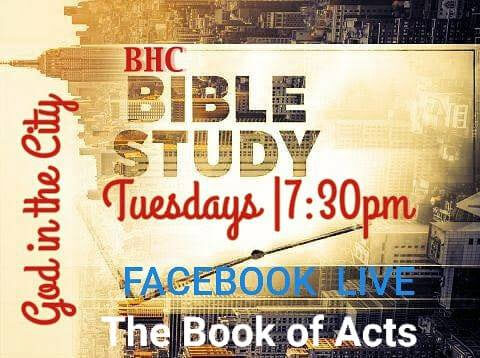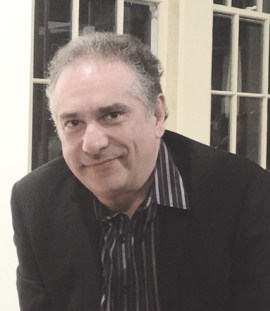As we embark on the seventh month of living through the coronavirus pandemic, houses of worship have continued to be there for their worshippers through virtual prayer and support.
In mid-March, they were forced to physically close across the City, being forced to hold remote services for its congregants, instead. Though services were allowed to take place in person with modifications after June 22 – under Governor Andrew Cuomo’s Phase 2 reopening plan – religious leaders have remained diligent and cautious.
We spoke with three local religious leaders about how they’ve been doing since the pandemic began.
Brooklyn Islamic Center gradually reopens
Throughout the pandemic, the Brooklyn Islamic Center (BIC) in Kensington has participated in social service activities by providing donations and necessary commodities to its members and others in the community.
However, one of the biggest challenges faced by BIC, according to Vice President and Imam Abu Samiha Sirajul Islam, has been providing meaningful prayer services – especially for Ramadan, the holiest month of the Muslim calendar.
“Special prayer services are usually held in Ramadan, but Ramadan fell this year during the pandemic,” he said. “So that special service was not held, along with other spiritual activities done in the mosque during the month of Ramadan.”
In terms of religious education, classes for children and adults and other educational services for BIC members – which are normally held in person – are still being held online.
Additionally, Imam Islam said monetary contributions from BIC members to run the facilities were hampered as they stayed away from the institution physically. Prayer services are now held on-site with health and safety measures in place, plus at a limited occupancy capacity.
“We see that people have a natural inclination to be in touch with GOD and prayer during calamities and they keep on asking when will we offer full services,” Imam Islam said.
Pre-pandemic, Bethesda Healing Center was already going virtual
The Bethesda Healing Center (BHC) in Brownsville had a semi-advantage going into the pandemic as it was already tech-savvy and holding services virtually. The center remotely connects with its worshippers through YouTube, Facebook Live and Whatsapp.
“We were doing live-streaming before COVID-19 and it was working, so we just continued with that,” Pastor James Osei-Kofi explained to the RHSR. “But, of course, this one was on a larger scale because many more people were watching. We had to buy and install more cameras in order to make this as professional as possible.”
BHC resumed shorter, in-person services on Aug. 2, with 25-percent of the congregation’s population going into the sanctuary at two scheduled times each day.
“We did that for a month, and we realized not many people were coming,” Pastor James said, noting that services are still being shown online.
Pastor James said an average of 75 attendees can be at BHC – including musicians, technicians, IT personnel and security. In-person attendance, since Aug. 2, has slightly increased and remained steady, according to Pastor James. To further emphasize the importance of and feasibility of utilizing technology, BHC worshippers must register ahead of time to attend services via an app, telephone call or text. Additionally, BHC has left about six slots open for each in-person service for those who are simply walking down the street and want to come to church. Upon entrance, everyone must remain socially distant, have their temperatures checked, and disinfect their hands with sanitizer.
Pastor James explained the biggest challenge for BHC has been finances, as it depends heavily on worshippers’ tithes and generosity. Again, worshippers had the opportunity to use an app to donate money or could drop off their envelopes at the office’s mailbox.
“We are the type of people who hug one another and talk to each other, sometimes for hours, before leaving the building. There’s a sense of belonging here and, when people come together, they feel more obliged to give,” he said. “Finances aren’t the same as they were before, but things are picking up and we are still moving ahead.”
BHC has also been running a food pantry and a hot-meal soup kitchen every Saturday from 10 am to 2 pm – with Pastor James at the forefront. The soup kitchen ran from March to June and then resumed once again in July.
“On a personal note, I think this pandemic has revealed matters about our own selves and how we, as churches, are supposed to help people. We were called upon to do much more than we could have done under normal circumstances,” Pastor James said. “We’ve been doing some outreach, including handing out PPEs as well, to let the community know, ‘Hey, we’re here for you. If there is anything you need, we are here to support and assist.’ So far so good, but we still have a lot to do.”
East Midwood Jewish Center remains closed
The East Midwood Jewish Center (EMJC) has not had any in-person services since the shutdown in March – and doesn’t plan to hold any until the pandemic dies down. Midwood, where EMJC is located, had a near 12-percent of residents testing positive (almost 3,015 cases) as of Sept. 29.
“We have a pretty diverse membership, in terms of age, but the people who come to our services tend to be older and are the most at-risk [for contracting COVID-19],” said Rabbi Cantor Sam Levine. “I really don’t want to create opportunities for them to be tempted to come out.”
Services have been broadcast over Zoom with members using their cell phones, laptops and even landlines to tune in. But a major challenge that Rabbi Levine has encountered is maintaining a sense of contact and community through this remote way, over an extended amount of time.
“It’s hard when people who are accustomed to being social together and in proximity to one another, all of a sudden can’t,” he told the RHSR the day after Yom Kippur, which was on Sept. 28 this year. “I think we’ve been pretty successful in reinventing the synagogue in certain ways. We’ve had a very nice and steady attendance at our daily services, on Shabbat and on the holidays. Daily services, for example, are better attended now than they ever were before.”
With that said, Rabbi Levine noted that having Zoom available as an option to host and view services has been great, overall. Plus, after EMJC services conclude, people use Zoom to hang out and chat for 15 minutes or so.
“I have no objection to using Zoom,” Rabbi Levine said. “It’s wonderful because it’s almost as if people have been asking for that connection all this time and we had never presented it to them in that way. Now, we are … and once we get back to in-person services, we may have to make adaptations that allow for a hybrid model. I’m not sure what those adaptations will look like later on.”
One thing Rabbi Levine wants to make clear to his community is that their health and safety are top priorities.
“I don’t want to rush this,” he said. “Right now, everything’s a big question mark and a gamble. I’d rather wait until things really are safe to gather in-person for services again.”
Author
-

George Fiala has worked in radio, newspapers and direct marketing his whole life, except for when he was a vendor at Shea Stadium, pizza and cheesesteak maker in Lancaster, PA, and an occasional comic book dealer. He studied English and drinking in college, international relations at the New School, and in his spare time plays drums and fixes pinball machines.
View all posts
George Fiala has worked in radio, newspapers and direct marketing his whole life, except for when he was a vendor at Shea Stadium, pizza and cheesesteak maker in Lancaster, PA, and an occasional comic book dealer. He studied English and drinking in college, international relations at the New School, and in his spare time plays drums and fixes pinball machines.










